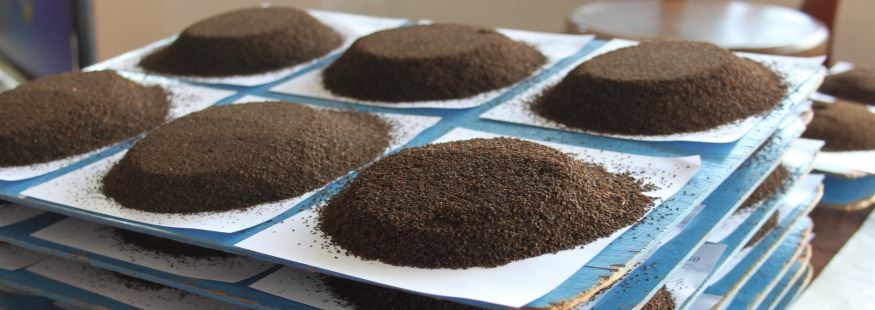Talking of Tea: Part One

With Lorna and Scott recently having returned from Sri Lanka and the inaugural Melbourne Tea Fair kicking off this weekend, tea is at the front of our minds.
The Bennetts business was born into tea. Horace Albert Bennett was appointed tea controller during WWII and was subsequently bestowed with the responsibility of rationing supply to ensure that all Australian’s could continue to enjoy their favourite cuppa. After tea control ended in 1955, HA Bennett & Sons continued to act as a major player in the Australian tea business.
It has been nice to shift our attention to the little green leaf that started it all, and it left us thinking that we do not spend enough time talking about tea.
So on that note, we have decided to dedicate a series of blogs to the art of tea. We will focus on different types of tea, how tea is processed, tasting and grading and tea brewing.
Let’s start with the basics; what is tea?
All tea comes from the plant camellia sinensis. Camellia sinensis is the cultivated form of a small evergreen tree with dark glossy leaves. Similarly to coffee, there are several different varietals of the tea plant however the two most widely cultivated varietals are camellia sinensis var sinensis and camellia sinensis var assamica. The sinensis varietal is traditionally grown in China and the assamica varietal is traditionally grown in Sri Lanka and India.
Tea is traditionally picked by hand. Mechanized harvesting is used in some origins, however the hilly terrain of most tea plantations often does not allow for the use of machine picking. Moreover, the quality of tea produced by these machines does not match that of hand-picked tea. Tea plants can be harvested every 7-14 days and the ideal pluck is the bud and top two leaves of the shoot. Some tea plants can be harvested all year round while others will only produce for a specific growing season. This is generally dependent upon altitude and climate. An average picker can collect approx. 40kg of tea per day and it takes approximately 5kg of fresh leaves to produce 1kg of tea.
There are five different types of tea; white, green, oolong, black and puerh. These different types of tea are all made from the same tea leaves. It is the way the leaves are processed that produces the characteristics of each type.
WHITE TEA
White is the least processed tea. It is made from very young
leaves or buds and is usually only harvested once early in the year. The leaves are hand rolled and then allowed to dry in the sun or baked. This produces a
light cup usually a very pale yellow with a lightly sweet taste.
GREEN TEA
Green is unfermented, dried tea that is most commonly
produced in China, Japan and Taiwan. It is steamed or pan-fired immediately
after plucking. It is often rolled into different shapes before drying. Green
tea typically produces a greenish-yellow cup with a light flavor and vegetal
aroma.
OOLONG TEA
Oolongs are semi-oxidised teas. They share characteristics
with both green and black tea and produce a cup that is in between the two.
Typically they are more full-bodied than green teas and often have light,
floral aromas. Oolong tea is renowned for its complex flavours and aromas.
BLACK TEA
Black is the most processed of all the teas. The leaves are
processed through several different stages, including withering, rolling,
fermenting and firing. Black teas are the most commonly consumed of tea
worldwide.
PUERH TEA
Puerh is fermented tea. It traditionally comes from Yunnan
Province in China and can come in green or black tea form. The tea is processed
using the same method as standard green or black tea however after it has
finished drying it is shaped and left to ferment. The fermentation process can
last for up to 20 years. It is said that, the longer it ages the more it
improves. This process gives the tea an earthy flavour and a sweet, musky
aroma.
Popular herbal teas, such as camomile, are technically not teas. If the blend does not contain leaves from the camellia sinensis plant it cannot be classified as tea. These blends are called tisanes. A tisane is a combinations of flowers, herbs or spices. Flavoured or scented teas, on the contrary, can be classified as tea as they are created by blending flowers, spices or herbs with tea leaves.
In the next post we will look at tea processing. Stay tuned.


